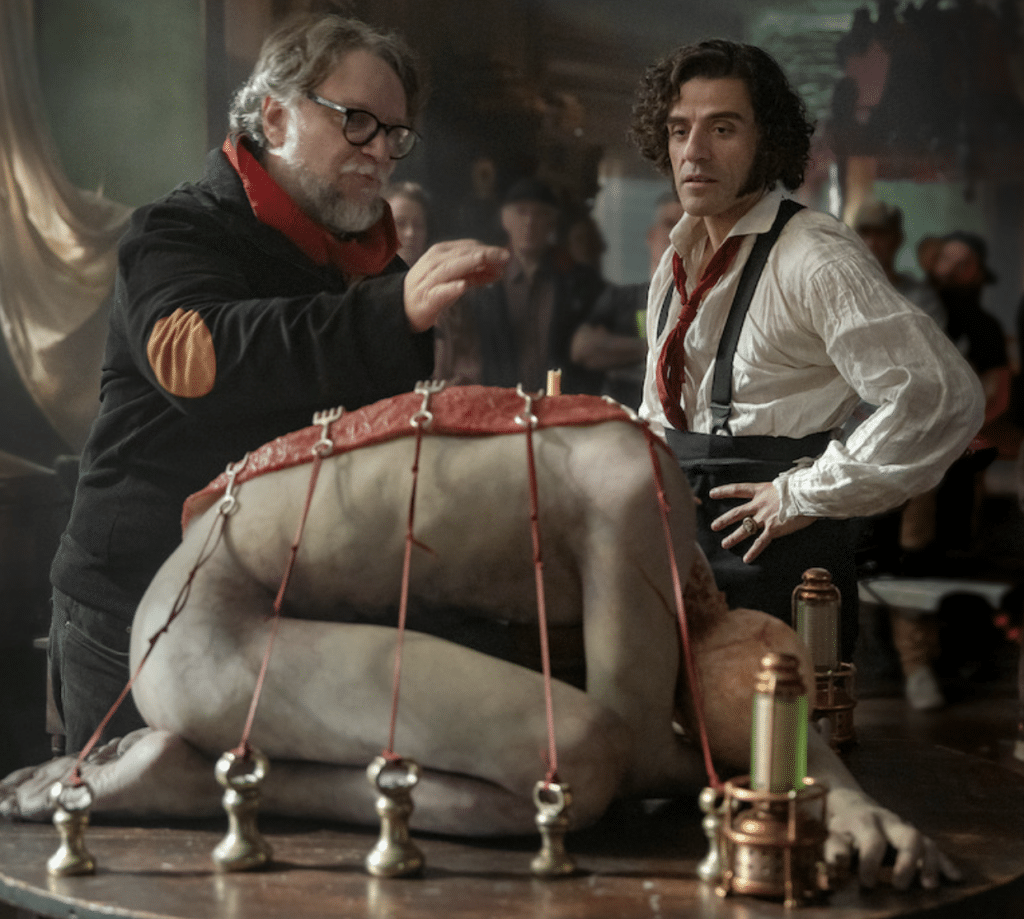The precarious representations in One Battle After Another
A bumpy journey about revolution and family makes us feel fear, disgust, humor, and satisfaction.


This highly anticipated film by Guillermo del Toro is adapted from the well-known and beloved 19th-century tale by Mary Shelley, which is often considered the first sci-fi novel.
In the 19th century, the exchange across continents had already become common in the areas of merchandise, science, and culture. In the film, the journey of Victor Frankenstein defying death gained inspiration from the Eastern energy system that is named ‘Qi’ and the lymphatic system being studied by Muslim scholars. The historical fantasies set in Europe need to choose to what extent of detail they will depict different cultures. Latino actor Oscar Isaac played Victor Frankenstein, a member of the aristocracy in Europe. Outside of mentioning Vienna and Edinburgh, this film doesn’t discuss the potential different influence from various academias and sociopolitical conditions as explicitly as the origin story. However, the continuation and waning of the Crimean War provided the necessary resource, the corpses, for Frankenstein’s research and also urged him forward in terms of the impending end of funding from ammunition dealing, which was later on revealed not to be the truth.
The more intriguing aspect is in Victor’s upbringing. Victor blamed his mother’s unexpected demise on his father’s hatred towards her and incompetence as a renowned physician. Victor was suspicious of his father’s despite for him and his mother, detesting their dark hair and quiet nature, favoring his joyous and blonde younger brother. Victor shares a strong bond and love with her mother, speaking in their own language. Even though elusively, the love and hate about lineage and bloodline are in the soil that fostered Victor’s desire to conquer death.

Rather than an epic historical design, the vivid colors in the film tend to be akin to a romantic fantasy, often associated with children’s films. The mechanic design with layers of metal components has an appearance of cyberpunk. The green cylinders filled with fluid and outlined with the rosy gold color caught my attention alone by themself. The scarlet and emerald flood the screen throughout the film, signifying different sides of ideas. At the beginning stage of experiments, flesh slicing and blood spilling repeatedly were shown on screen with a smooth waltz to serve a gothic taste. Accompanying this aesthetic of romantic fantasy, Guillermo del Toro favoring well-built props over special CGI offers a unique experience in vision.
I disagree with a popular belief that the women are attracted to the monsters in Guillermo’s Frankenstein and the Shape of Water because of a resonance with something dark and alien in the monstrosity. Even though the monster is set to be grotesque, played by Jacob Elordi, the monster is 6 feet 5 inches tall, filled with stitch scars but built in perfect fitness, and with a sharp jawline. Mia Goth’s Elizabeth connects with the creature by the childlike purity and innocence, untouched by men’s greed and brutal ideas. The attraction in these two films has a sense of fairytale, yearning for a pure goodness and beauty buried under the alienated surface. The goodness of the creature is fully expressed in the second half of the movie, told from the creature’s perspective. The good deed of him let him describe ‘the spirit of forest’—still as a being with otherness but as a holy intervention. Films like Possession (1981) are more likely to meet the description of depicting the woman’s resonance with the monstrosity.

After the creature and Victor’s conversation in the ship’s cabin, the creature forgave the creator’s sin and accepted his suggestion ‘to live,’ amending the conflicts in agreement. The film ends with an optimistic tone that the creature helped the ship escape the ice, and the Danish captain abandoned the ambitious mission of reaching the North Pole, fulfilling his men’s wish to return home. The emotional turmoil of Victor, rather than the creature’ intelligence and soul coming into shape, is more compelling to me. The horror of his ambition, recklessness, and tunnel vision isn’t showcased to the fullness, leaving space for understanding the creature’s purity.
Related lists created by the same author
A bumpy journey about revolution and family makes us feel fear, disgust, humor, and satisfaction.